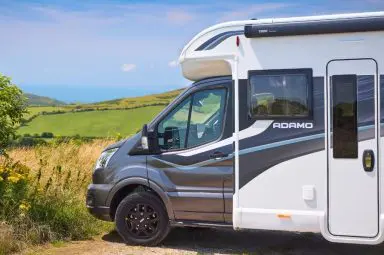1970 Bailey Maestro vs 2023 Bailey Discovery D4-4L: Part I
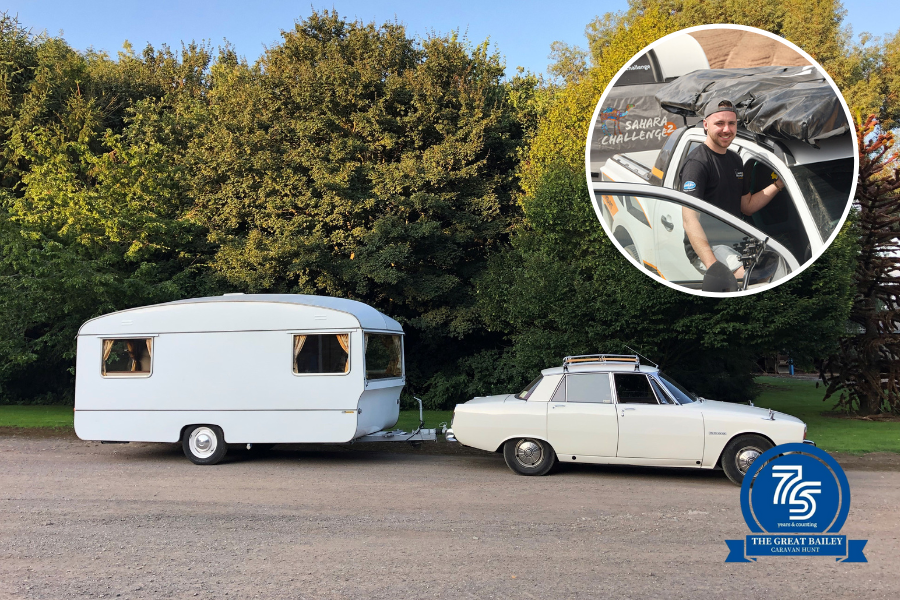
Many people have a nostalgic notion of what caravanning was like in the 1970s: the orange and brown upholstery, water foot pumps, canvas awnings, glass windows, and gas lamps are the sights and sounds that accompany people’s memories of caravanning in those long, hot summers, half a century ago.
For most people, the memory of these caravans is just that: a memory. Unfortunately, I was not quite old enough to be around during that era, and the stories of these basic caravans intrigued me. I must be one of the few people who have regressed from a modern caravan to a classic one—and I’ve never looked back! It turns out that this rose-tinted view of caravans from the 1970s is pretty realistic. Without being burdened with technology and modern conveniences in a large, cumbersome tourer, caravanning with an old, basic tourer is a truly remarkable experience. It’s amazing what you don’t miss, and it seems to bring you much closer to nature and the great outdoors. What you lack in conveniences, you gain in cosiness, character, towability, and style.
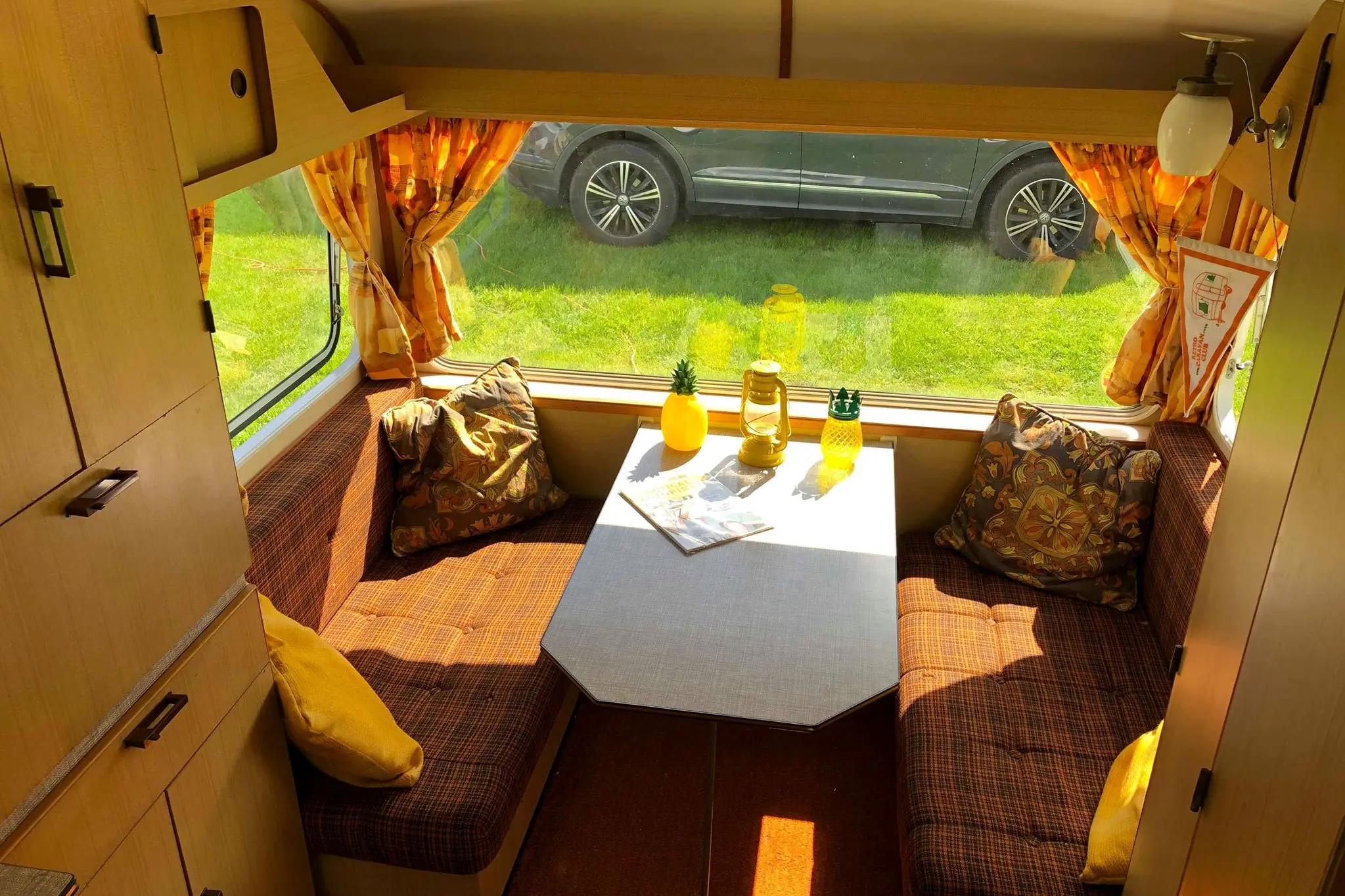
A few years ago, I found myself the proud owner of an immaculate time-warp Bailey Maestro from 1970. It was so well-preserved that even the original paint still retained its shine, and the interior was untouched—still with those ubiquitous garish orange and brown colour schemes! I must confess at this point, it has now been several years since I have used a modern caravan, and with that said, Bailey invited me to try out the brand-new Discovery D4-4L to see how it compares to my vintage one. Could it tempt me into modern caravan ownership once more…?
EXTERIOR STYLE
The Maestro was fairly conventional as caravans went back in the 1970’s. The boat-shaped roof was synonymous with British caravans right through to the turn of the 21st century, though the little humped section below the front window was a bit of unique Bailey flair. Devoid of any graphics other than a small orange model tag, the stark white shell is softened by its curvaceous shape. The Maestro is full of small design details that you don’t generally find on caravans today, such as the self-draining roof with small gutter sections to funnel rain away from the bodywork and a large front window that almost fills the entire front panel.
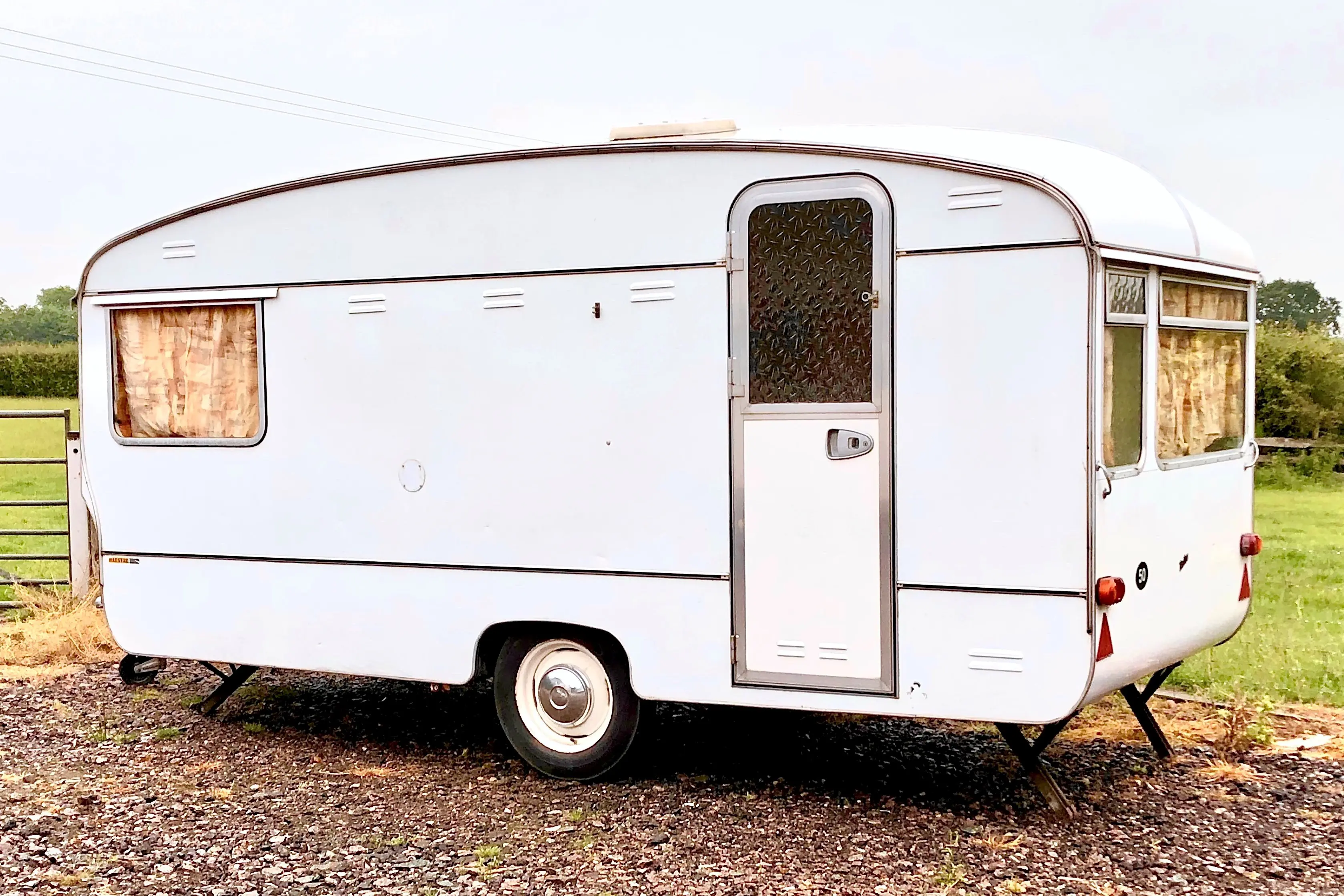
In contrast, the D4-4L is what you would describe as unconventional. Its soft grey colour scheme with swooping blue graphics is contemporary but unique in the caravan industry—there is nothing else on the market that even resembles the package of the Bailey Discovery range. Compared to the square white boxes that adorn British roads today, the curved rear end of the D4-4L is a welcome break from tradition. When parked next to the Maestro, you instantly see how much larger caravans have become; the D4-4L is taller and wider, even though it’s a compact caravan by today’s standards.
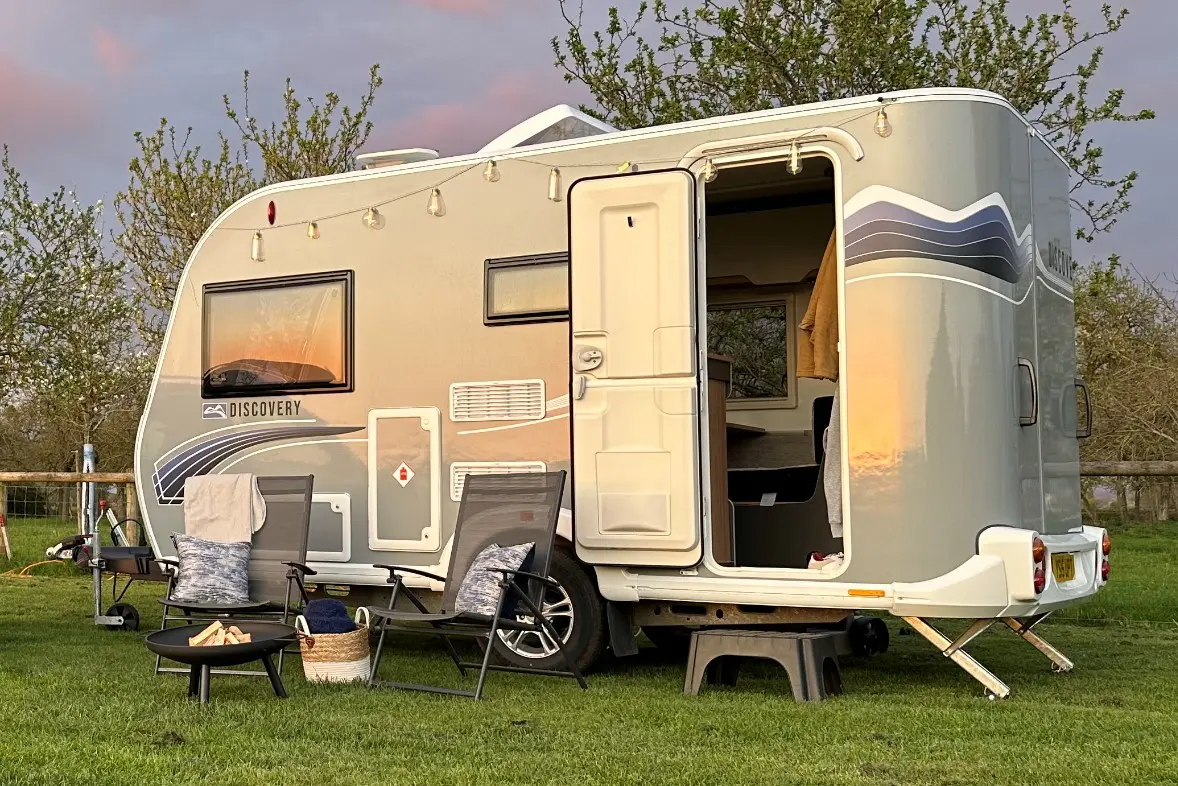
TOWABILITY
Back in the 1970s, the caravan industry generally relied on the British-built B&B chassis. This was a full steel frame with car-style independent suspension that used coil springs and shock absorbers. The Maestro runs on large 15″ wheels, which make it both stable to tow and less susceptible to bouncing out of potholes. The Maestro tows beautifully; in fact, all older caravans on independent suspension tow faultlessly. They seem to just float behind the car, as opposed to modern rubber torsion suspension, which is very bouncy unless shock absorbers are fitted. The downside of the Maestro’s chassis, as I know from experience, is that the non-galvanised chassis needs regular maintenance to prevent it from rusting.
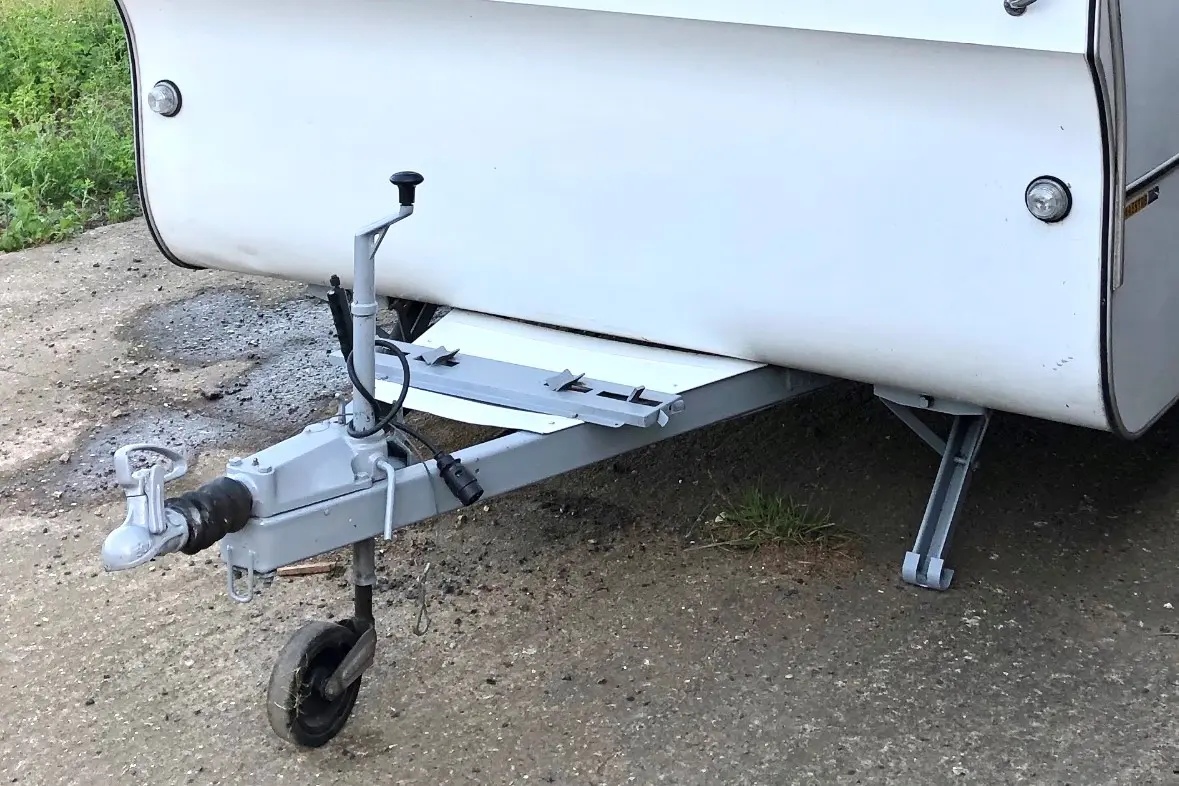
This is no longer an issue for the D4-4L, and indeed all modern caravans, as the British caravan industry has almost universally used a German galvanised chassis since the early 1980s. Knowing my past experiences with bouncy modern caravans, the biggest surprise for me about the D4-4L is just how incredibly smooth it is to tow. Behind my modest modern car, it sticks to the back like glue, completely unfazed by crosswinds and passing lorries. I think the towing ability of the D4-4L can be attributed to its longer-than-usual A-frame (designed to accommodate a bike rack) and the even weight distribution due to the lack of a front locker. With the D4-4L (and all Bailey caravans), heavy items such as the gas bottle are placed over the axle, and the leisure battery is set into the floor, where it helps maintain a better balance for towing. This careful design by Bailey was immediately evident during a fast-paced jaunt up the M5 from their factory in Bristol with the D4-4L in tow. If you’re new to caravanning and worry about towing, you can’t go far wrong with the Discovery D4-4L; its road manners are impeccable.
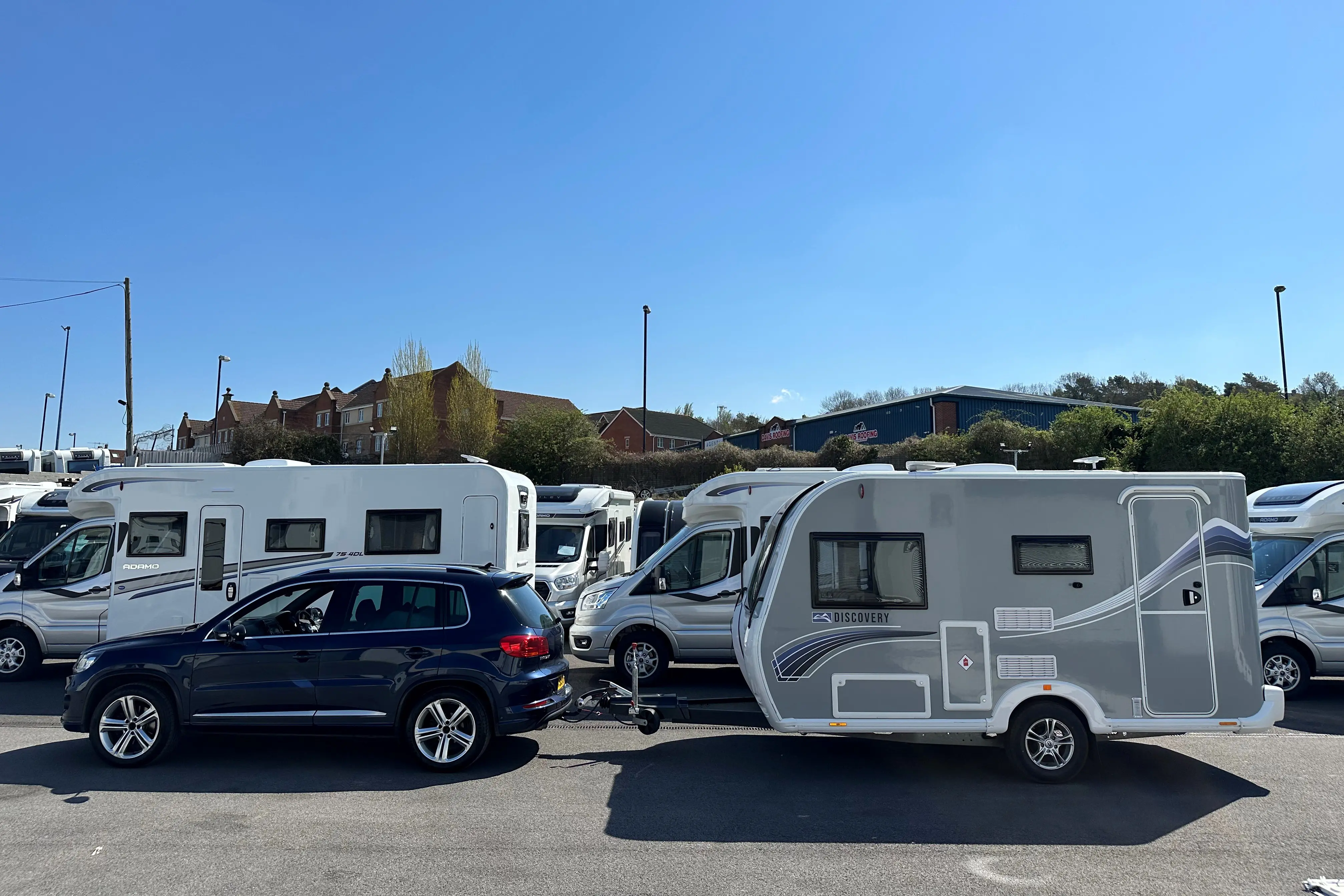
Follow more from Cameron Burns on Twitter at @NotAWhiteBox, Facebook at Not Another White Box and Instagram at notanotherwhitebox.
Previous
75 Years and Counting
Next
1970 Bailey Maestro vs 2023 Bailey Discovery D4-4L: Part II
Latest news & events
See all news & eventsWinchester Caravans & Motorhomes Caravan, Motorhome and Awning Spring Spectacular
COLDEN COMMON, MAIN ROAD, WINCHESTER
Stowford Leisure (Devon) Spring Open Weekend & Awning Show
STOWFORD LEISURE (DEVON), A361 WEST DOWN, ILFRACOMBE, DEVON

